Your cart is currently empty!
Building a Van Home for a Cat (and Two Humans)
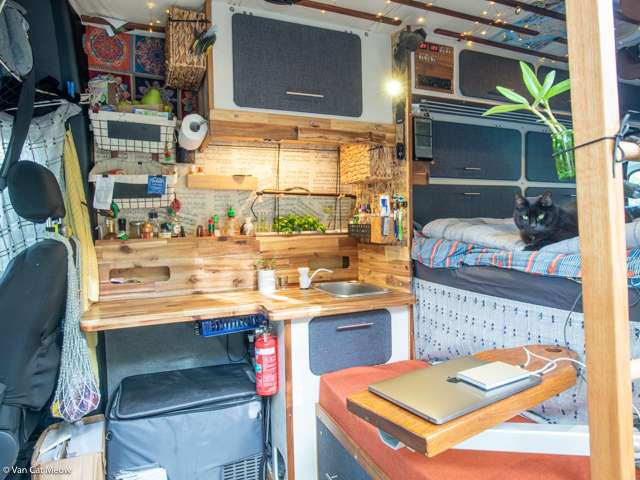
In the summer of 2019/20 I built a campervan for Steph, Willow, and myself.
The van was a Mercedes Sprinter MWB 416 4×4.
In the topics below I share the photos I took during the conversion and give some explanations as to how I approached things. So, let’s get started!
You can see some photos of the (completed?) van here.
Disclaimer: I am not a professional. The information provided in this post is done so without warranty, and to be honest, most of it is terrible advice! The purpose of this post is to provide a record of how the conversion was completed and to share what I learnt. This is not a ‘how-to’.
Contents
Topics
- Check out our initial conversions plans.
- See how we put together our 12v electrical system.
- Cabinetry is attached to the chassis with blind threaded inserts.
- Building the framework for the bedbase, kitchen, and cupboards.
- See what insulation and ventilation systems we used.
- We built a custom roof rack installation to host our solar panels and deck.
- The flooring, ceiling, and everything in between.
- A custom built ladder gets us up onto the roof.
- Making the space work with hanging storage, drawers, and suspended tubs.
- Finishing touches and extra storage in our Sprinter van conversion
- All the bits that didn’t fit anywhere else.
Background
Would you believe that I had forgotten how much work goes into converting a van into a home?
When I picked up our new Mercedes Sprinter 416 from the dealership last November the gravity of the undertaking was yet to hit me. In the previous months I had spent countless hours drafting up plans to ensure my design would work and that every necessity would be taken care of. Parts and accessories were ordered and when I arrived in Hobart I was met with over one hundred parcels to get me started.
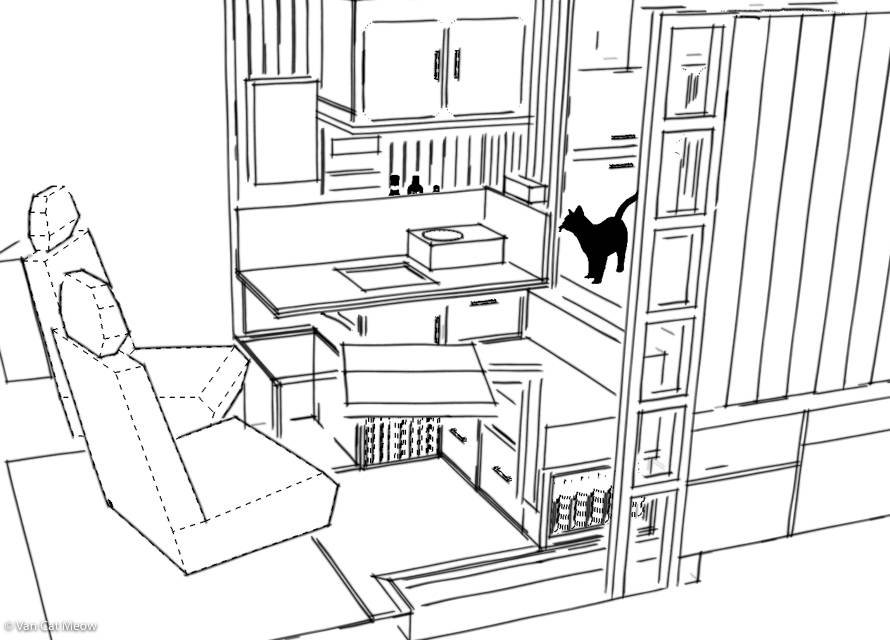
This was my second major van build, not including my first van which was just a very simple plywood platform for a mattress.
Our previous van was a Volkswagen T5 Transporter which was my primary home for nearly 5 years. The space was a little tight for the three of us so we decided it was time for an upgrade.
The brief was simple: build a van for two people and a cat that will be our base for the next ten years.
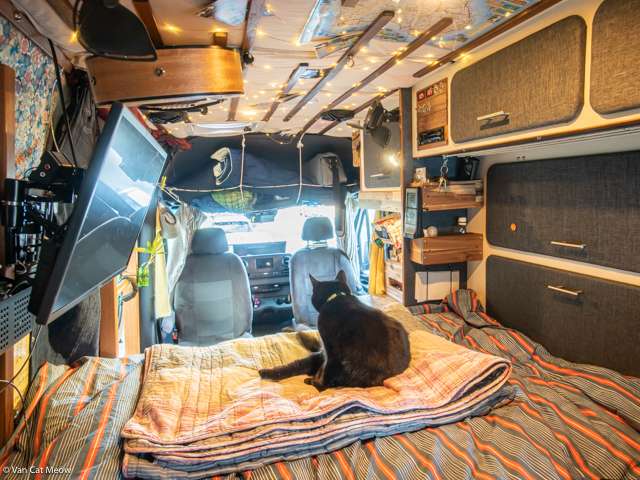
I allocated 3 months to complete the project. This was 3 months of my complete and undivided attention.
You can see my initial conversion plans here. Note that some minor details have changed during the build.
So how complete is the van? All-in-all the plan was brought to life within the allocated time with the exception of the water tank installation. This will be installed once we return to Brisbane at which point the van will be fully ready for adventure.
There will also be further projects to maximise storage and general liveability. E.g. A ‘bathroom cabinet’, hanging storage for my light stands/tripods, some finishing touches on trim work and upholstery.
General Overview
For those who are entertaining the thought of doing their own van conversion, it’s a bit like browsing Pintrest for 40 different craft projects and then starting them all at the same time!
Yes, the amount of work that goes into a van conversion is entirely up to the owner and their individual needs. You could complete a van conversion in a weekend if your living needs are simple.
There were many finishing touches that took me a vast amount of time (and frustration) that resulted in the build as long as it did. This was identified in my initial planning and I knew what I was up against – though I must admit, having now just left Hobart, I am thoroughly exhausted!
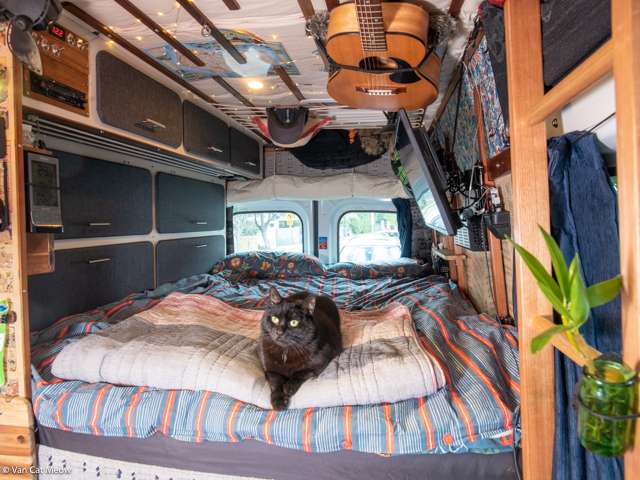
What is our van?
Our van is an off-grid, off-road, self contained home and office space for two humans and a cat. A space that will allow us to explore the wilds of Australia and our dreams *jazz hands*.
The layout is defined by a double bed in the rear which remains set up. To the side on the drivers side are set of cupboards including three deeper cupboards above that extend over the bed somewhat. The two bottom cupboards have a rail for hanging clothes.

There is a huge area under the bed for storage including a sliding rail system that suspends plastic storage tubs.
The living area comprises of the two front seats that swing around (factory swivels) and a bench seat at the foot of the bed. Under the bench seat are storage drawers.
The kitchen hosts a small sink and pump tap that connects to a water tank mounted under the vehicle. Waste water from the sink is stored in a 15l tank. Cooking is done on a portable camp stove.
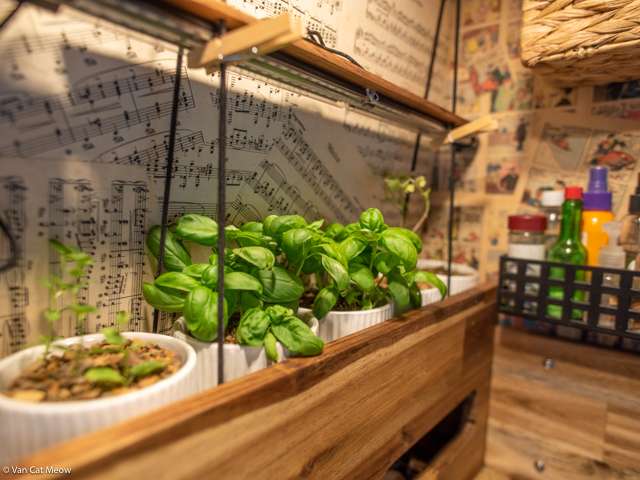
There are no fixed shower or toilet facilities. There is storage for a portable camp toilet which is accessed by extending one of the under-bench drawers out. A bag type solar camp shower is used for washing – though the preferable option is to jump in the river!
Ventilation is provided by Maxxair vents in the front and rear, and a Caframo cabin fan provides in-van cooling. An additional exhaust van sits under a range hood above the kitchen.
The electrical system comprises of 520ah of batteries which are charged with a Enerdrive DC to DC charger from the alternator and the 380w of solar on the roof. A 400w inverter provides power to 240v devices including our PlayStation 4 – whaaaaaat??
My pride and joy, a 5 rung ladder crafted out of Tasmanian Oak, is mounted internally and provides access to the roof when the sliding door is opened. On top is a roof rack system that I constructed myself from aluminium profiles that houses the solar panels and a deck (yet to be installed).
So that’s our van – check out the topics above to see how it was built.
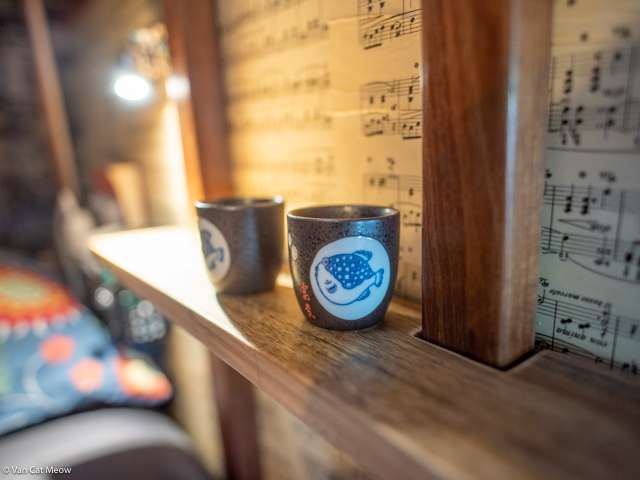
Think outside the box
One thing I see a lot of when people start a van conversion is the creation of a box – lining the whole floor area, walls, ceiling with plywood. My approach was to avoid the extra weight this would cause e.g. the rear under-bed storage floor is lined with foam and only the living area has a ‘proper floor’. Although some ply was used for the walls, generally a ‘softer’ approach was used with upholstery fabrics and trim work. This will be a clearer when we get to that section.
Without the ‘plywood box’ I am free to run cables behind the upholstery and trim as I please. I admire anyone who knows exactly where their cables need to be run at the start of their build for I am not one of them!
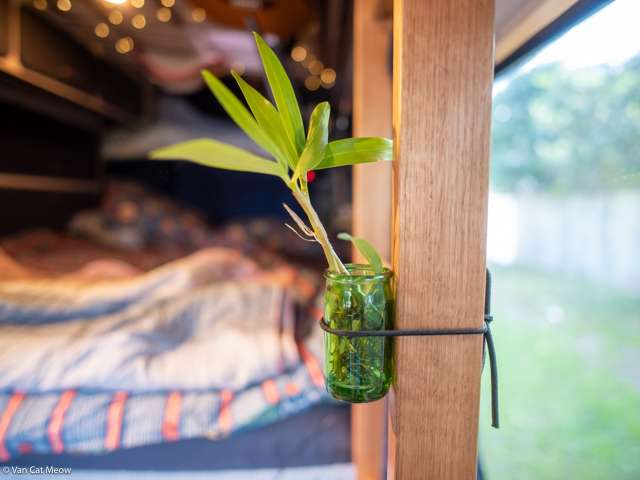
* * *
The three photos below were taken at various stages of the conversion. In the last photo you can see my nephews testing out the television while Willow is asleep on the bench seat!
Browse the topics at the beginning of this page to learn more about the build.

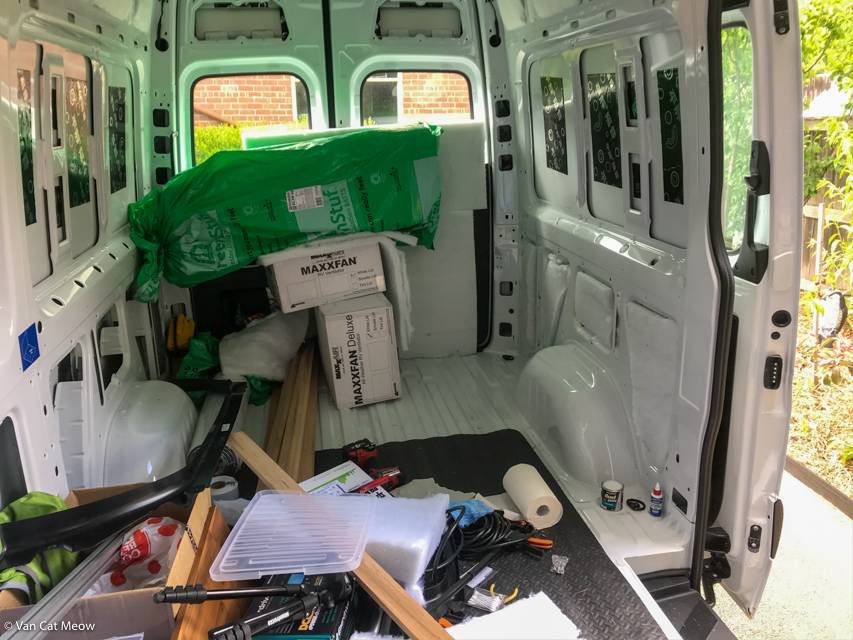
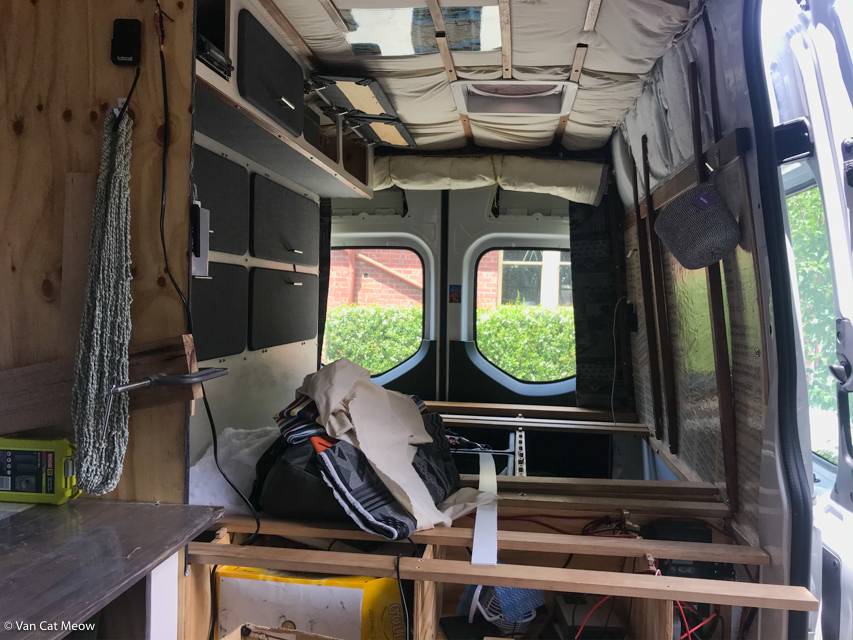
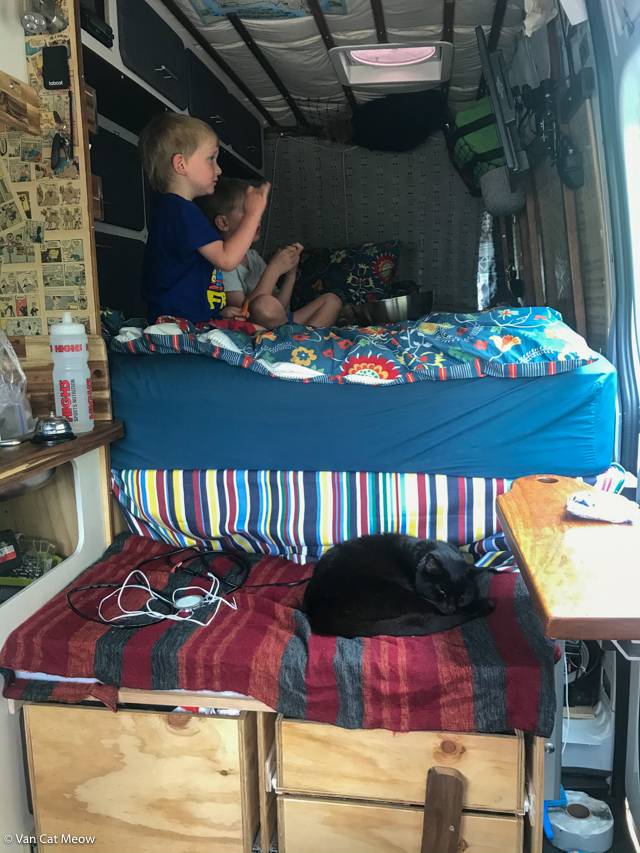
Van Cat Meow
As seen on:
Lonely Planet
The Daily Telegraph
Business Insider
People Magazine
Sunrise TV
Buzzfeed
Mashable
